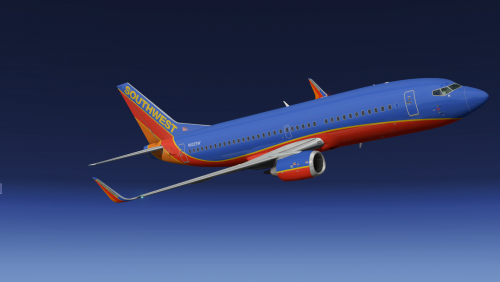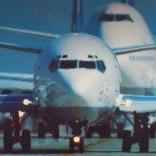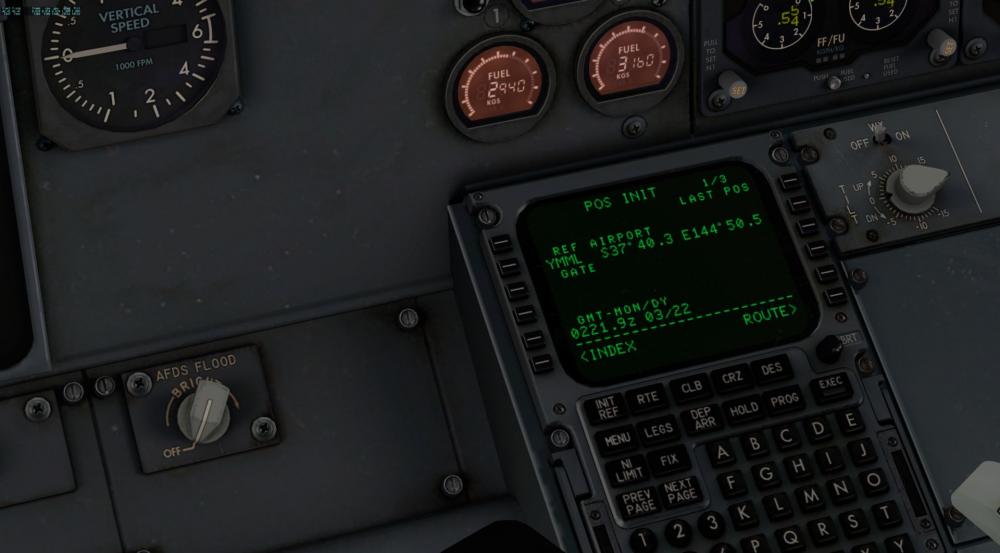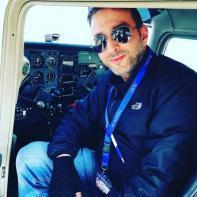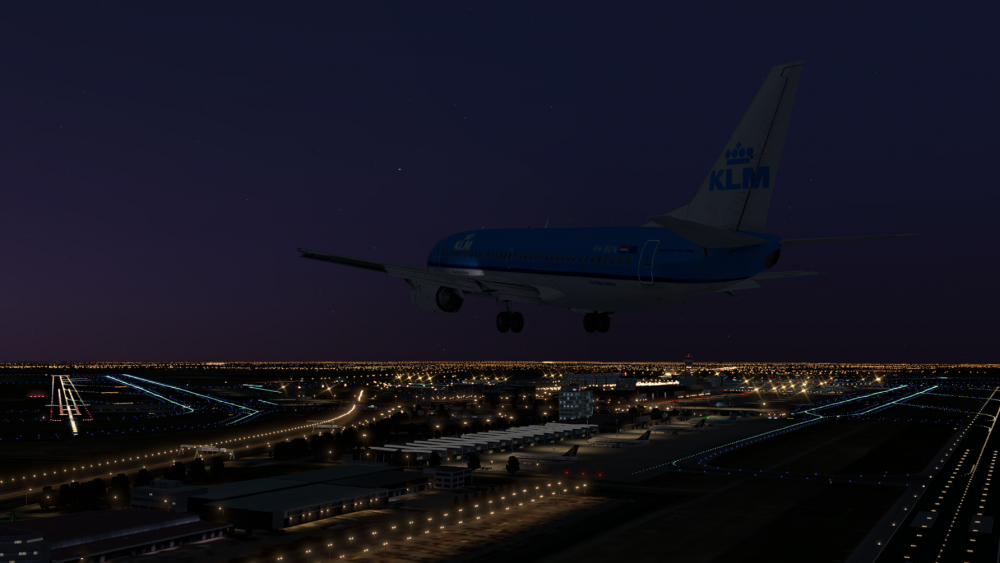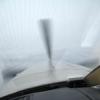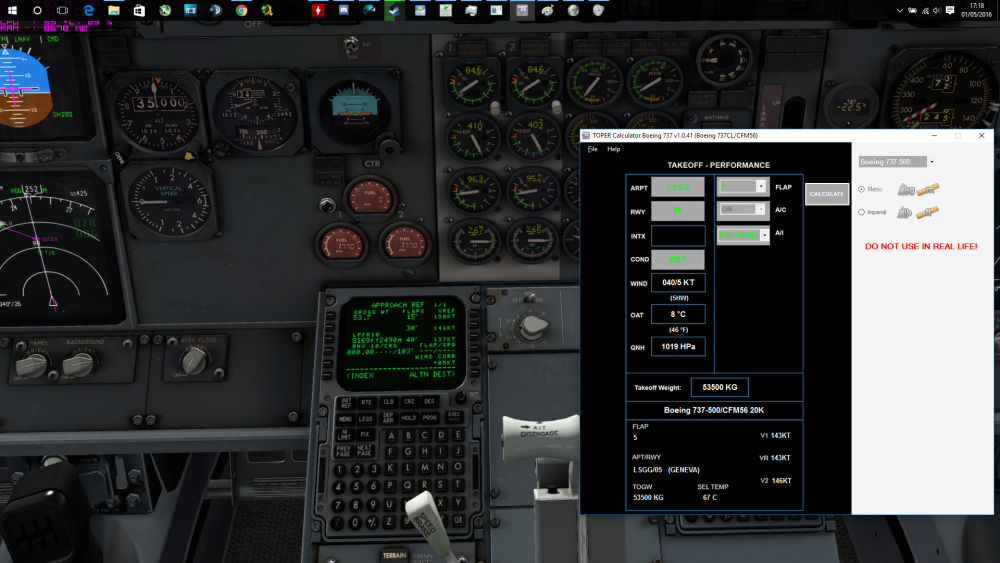Leaderboard
Popular Content
Showing content with the highest reputation on 05/04/2016 in all areas
-
Just want to say that I'm absolutely STUNNED by the work all of you are doing. The quality and number of repaints is just AMAZING!!!I still havn't seen one livery that looked bad.. Last time I counted a few days ago we had about 100 liveries total, now it's many more - INCREDIBLE! And whats also fun is all the "exotic" ones that you rarely see - some I've never even heard of before. And not to mention all the retro liveries that bring back sooo many memories I thought I'd be up to my ears in livery requests right after release - but don't think I got more than a couple and those you have already have taken care of . So thank you all for helping to keep the legend of this magnificent machine alive for many years to come - Have a great and hopefully "bugfree" weekend everyone8 points
-
Version 1.0.0
1,249 downloads
Welcome to the first in a series of Southwest 737-300 repaints for the excellent IXEG 737 Classic! This is N622SW, c/n 27932, a 737-3H4 which first flew Mar 12, 1996 and was delivered to SWA Mar 20, 1996. Ship 622 was originally painted in the carrier's original "Desert Gold" livery and repainted into "Canyon Blue" colors in early 2006. She received retrofit winglets in early 2008, which are reflected on this repaint. As yet this aircraft has not received Southwest's new "Heart" livery. To install, unzip into the "Liveries" folder.2 points -
2 points
-
2 points
-
2 points
-
2 points
-
2 points
-
Checked for "shut down tailwind ILS/LOC" in the X-Plane map? Hit me whenever I enabled it (and forgot about it right away). Flo2 points
-
2 points
-
For me too. I did have some soft crashes with v1.0.0 but never a crashing X-Plane or a CTD. Since 1.0.2 i had no issues! Flying a lot in Switzerland, the Northsea (EDDW, EDDH, EDXW) without problems. Philip2 points
-
2 points
-
Read the FCTM, section on LANDING. Other then that, practice. Don't become too obsessed with "greasing" the landing. The AP will touchdown at 150 fpm or so, that's the perfect rate. The FCTM tells you to "fly the aircraft onto the runway" and "don't allow the aircraft to float in an attempt of getting a smooth touchdown". There's SOOO many more parameters that define a good landing. That's why I've always been against those FPM-meters at touchdown, or those virtual airlines that would grant more points the lower the number... Ridiculous... Oh, and watch this interesting video! https://www.youtube.com/watch?v=UMcXbAmwiNs&index=23&list=PLZIehabHdEOc6RBK0OHDVPP_V6NSgaSky2 points
-
I think they will create an update just for you within the next few seconds... :-) Greetings, Sebastian2 points
-
Received this email today from Tanguy. Awesome photo, so I thought I'd share it (with permission) I'm a B737 pilot with more than 1500h on B737/300/400/500W and wanna congrat IXEG for the amazing product you created. Im Very impresed with the fidelity. Still some minor bugs and fix but its awesome. Attached is a pic for you guys. Kind Regards! Tanguy1 point
-
Hi all, Just wanted to say thank you for all the comments on my promo vid for the IXEG 737 Classic. I had a blast making it :-)1 point
-
Enter Air (SP-ENC) View File Introducing Enter Air (SP-ENC). The following registration is on the 737-400 and operates for Enter Air. The livery is fitted onto the IXEG as closely as possible. Enter Air Sp. z o.o. is a charter airline with its head office in the Zephirus Building of the Okęcie Business Park in Warsaw, Poland. Enter Air has three bases in: Warsaw Frédéric Chopin Airport, Katowice International Airport and Poznań-Ławica Airport. It also operates holiday and charter flights out of other Polish and European airports. Enjoy as always! --Mike Submitter MDDXP Submitted 05/04/2016 Category IXEG 737 Classic Livery For Click Here For Aircraft X-Plane Version(s)1 point
-
1 point
-
American oneworld for IXEG 737 Classic View File By Request.. American Airlines One World Livery (Fictional) Final Version... Thanks for downloading. Submitter Celis Submitted 05/03/2016 Category IXEG 737 Classic Livery For Click Here For Aircraft X-Plane Version(s)1 point
-
Australian Airlines IXEG 737-300 View File Australian Airlines ( 1980's ) 737-300. Note 1: The Australian font is not 100% Yes I know! It's as close as I could get for now. Note 2: The engines are not white! Go look at airlines if you think I am wrong! Submitter yukonpete Submitted 05/03/2016 Category IXEG 737 Classic Livery For Click Here For Aircraft X-Plane Version(s)1 point
-
American Airlines Old (N678AA) View File American Airlines Old Livery (N678AA) Simply drop inside the liveries folder Enjoy Submitter scubajuan_new Submitted 05/04/2016 Category IXEG 737 Classic Livery For Click Here For Aircraft X-Plane Version(s)1 point
-
1 point
-
1 point
-
1 point
-
1 point
-
It has to be so, I think Jan explained that in another post already. So basically the Primary Altimeter gets some fancy computer calculations to correct the altitude, while the standby one doesn't (its just static) -> they can divert up to 400ft. Cheers,1 point
-
Hi Xander, I experience the same - but this is attributed to X-Plane´s physics modeling in tight turns. It just bleeds energy very fast...maybe we can tweak the ground model a tiny bit better... But here is my offer - you run that single engine up a bit higher and forget about the cooldown time - and I will pay for all the extra maintenance costs that you will suffer! Jan1 point
-
1 point
-
No problems. I was holding off flying the plane until the next update came out. Too many workarounds to keep track of! Hopefully the next update will not be too long as I am dying to do some 'real' flights. And hey, I am a programmer- fixing bugs is my job.1 point
-
1 point
-
That was IT! Totally smooth flight....not one micro or any other stutter issue...my flight LPPT-LPFR was Smooth As Silk. ANY time before changing that setting, always micro stutters...very small, not too distracting, but a real pain in the you know what. Here's my gizmo log for any forensics btw, I also unchecked xplane update notification on the theory if I give one permission to check my system, the problem may still be there, but who knows. Nevertheless, unchecking send data to xplane seems to have solved this little annoying problem Thank you Ubbi!!! GizmoLog.txt1 point
-
A pilot lives in a world of perfection, or not at all. -- Richard S. Drury, ‘My Secret War.’1 point
-
1 point
-
this is a bug on the fmc not navdata. it is known already. as you already realized use "next page" current gps aircraft position instead of airport position and you are good to go1 point
-
IT should Tom. this is why we need guys like you, nobody ever thought to try and delete a coroute. -tkyler1 point
-
I've talked to Laminar about this, and it's tricky to say the least. I'm hoping to find a creative away around it for a future update, but can't make any promises yet.1 point
-
Log files are located in the x plane 10 directory. And if you are still in the sim. Press the dot button 4 times to get a debug file.1 point
-
1 point
-
I think you are fine with 2, actually - the plane is not small and nimble, so I think that should be fine. Jan1 point
-
Hi Jan, this one was a hard one (at least for me) but i "think" i have found the issue! After a while of using X-Plane i noticed the following: these little stops (not the heartbeat every 2 secondes but the ones with more time in between) are not only with the IXEG B733 but also with all other planes. But i did only noticed them annoying with the B733 because of the sound "cracks". Other aircraft with these little "pauses" do play the sound through so i don't noticed them. Now the searching begun! After a lot of trying i did found this for me. If i do enable the "send data to laminar" i get the stutters with "soundcracks" but if i don't enable this, the sim runs smooth without any stutter for me!! @Litjan you said you also have these stutters on your laptop but not on the other machine. Could you check if you do have the following button enabled on the laptop and disabled on the other one? Than we would have proof of my finding!1 point
-
You will find that in flying, we have plenty of techniques to remember things. During my military flying there were so many acronyms. Though these are more NG(BBJ) driven, I put together this list to assist some of the new 737 guys. I've attached a file also. Aircraft References • Main Gear on your side: NESA Transmitter in lower outboard of window • Main Gear on Opposite side: Lower inboard corner of window • Outboard Side of Engine on your side: Window Handle • Outboard Side of Engine on Opposite side: Glare Shield bend • Wingtip on your side: 2.5 concrete blocks • Nose Gear: Inside of HSI Engine Start (Approximate values) • 2 -- 20% N1 • 4 -- 400 degrees EGT • 6 -- 60% N2 • 6 -- 600 pph FF Before Takeoff (LLLAASSTT Chance) • L-anding Lights (tech: nose wheel light on when cleared for takeoff) • L-adies (sit the FAs down with PA message to the back) • L-ower DU display cleared • A-utothrottle ARM (tech: when cleared for takeoff) • A-utobrakes - RTO • S-trobe lights ON • T-errain (tech: Captain Terrain/FO Weather) • T-CAS (TA/RA) 10,000’ check during climb out (FLAAPS) • F-uel Pumps (Ctr Tank management per alternate operating procedures) • L-anding Lights -- RETRACTED/OFF (consider 18,000’ in high-traffic areas) • A-irspeed -- accelerate to desired climb speed • A-PU -- Off/as desired for shorter flights/EROPS/WX • P-ressurization check (Auto/pressurizing/cabin alt OK) • S-eatbelt (double ding by going off/wait 1 sec/on then auto) Before Descent (AIRBAG) • A-TIS • I-nstall the Approach • R-adio’s -- Tune and ID • B-rief the Approach • A-pproach Checklist • G-o Around Procedures (How will the airplane fly it? HDG SEL, etc.) Planned Descent Point • Timing -- Approx. 10 seconds for every 100’ of altitude to lose • Distance -- Divide HAT by 300’. This is the distance to start descent from the end of the runway. Enroute Descent Path Planning • Build a waypoint 40 NM track distance from the landing runway with 240/10000 inserted for Speed/Altitude. - AND/OR - Use the fix page and put a 40 NM circle around the runway (or FAF) and plan to cross the circle at 240/10000 for a straight-in arrival. • When planning an enroute descent to radar vectors to final it can be difficult to determine how far out you will be vectored and how soon you should begin your descent. Request a descent at a distance that will allow a constant 1500 fpm descent. To determine this descent point: • Load the expected approach using the FMS DEP/ARR page • Load the FAF or OM point/altitude on the descent page at 3R. • You can monitor the V/S as you approach this point. When the V/S approaches 1500 request descent. Even if the descent is not granted immediately, you will have a very good target descent rate when ATC permits the descent. This technique provides a constant descent that mirrors our constant climb to cruise profile. Descent Profile • 3.5:1 (Miles : Altitude) • For every 50 Kts of wind +/- 2 Miles • Losing 10 KIAS Takes 1 NM 10,000’ check during descent (10,000’ AGL for higher field elevations) (FLAAPS) • F-uel Pumps (Ctr Tank management per alternate operating procedures) • L-anding Lights -- EXTENDED/ON (consider 18,000’ in high-traffic areas) • A-irspeed -- decelerate to 250 • A-PU -- On/as desired/WX considerations • P-ressurization -- set for landing field elevation • S-eatbelt (double ding by going on/off/wait 1 sec/on) Cat II/III ILS (ABCD) • A-PU -- On • B-rake Setting • C-at II/III ILS Procedures • A -- Approach Brief • A -- Alert/Decision height callouts • A -- Altimeter bugs (radio and barometric) • D-epart runway plan (How will you taxi to park -- SMGCS?) Before Every Approach • “AAABBCC” • A-TIS • A-pproach loaded in FMS • A-irspeed set in FMS • B-rief • B-rake setting (off, 1/2/3/Max) • C-hecklist • C-onfiguration (flap setting) • “CRAMPS” • C-ourses -- set/verify inbound course on MCP for FP & PM • R-adios -- set/verify correct frequency (ILS/VOR/Tacan/NDB) • A-ltimeters -- set/verify QNH/QFE as appropriate through transition • M-inimums -- set/verify for PF & PM • P-ush -- APP mode (or VOR/LOC or LNAV or Hdg Sel) • S-peeds -- set/verify Vref is set and displayed for flap setting Engine Failure on Takeoff • “4 Cs” (accomplished when flaps are up at min. maneuvering speed) • C-hange (Level Change) • C-ontinuous (Max Cont) • C-rossfeed (with fuel only in wing tanks) • C-hecklist (NNP then After Takeoff) Single Engine Trim • Trim into good engine is approximately equal to Fuel Flow Single Engine ILS Approach • At 1.5 Dots or later on the Glide Slope -- • Gear Down • Flaps 15 • Reduce Thrust 10% N1 Non-ILS Approach (VNAV is preferred for straight-in approaches) • 3 NM -- Configure (Gear Down/Flaps 15, Bug 15, Landing checklist to flaps) • 2 NM -- or sooner/Set Next Lower Altitude (ensure VNAV if using) • 1 NM -- Flaps 30, Bug 30, complete Landing checklist • 0.2 NM -- V/S As Desired (unless using VNAV) Touch and go/pattern work Missed Approach Note: Assumes intent for complete flap retraction to missed approach holding pattern. • TO/GA (A/P will kick off under single-channel operation) • Set Go-around thrust • Set pitch to Go-around attitude • “Flaps 15” • Positive climb rate - “Gear up” • 400’ AGL - “LNAV” or “HDG SEL” (Note: for Non-Precision approaches your probably already at/above 400’ AGL or very close if going missed from and DA/DDA/MDA) • Retract flaps on speed • 1000’ AGL - Set LVL/CHG or V/S + 1500’ • After Takeoff checklist (Ops Man) Radar Pattern Climb Out From Touch & Go • PF rotates aircraft to 15 degrees nose high • Positive climb rate - “Gear up” • Flight directors - ON (if coming from VFR Pattern OR Recycle) • 400’ AGL- “Bug Up, flaps 5, LNAV or HDG SEL ” • 1000’ AGL - Technique: "V/S, Set 1500 fpm" or "LVL CHG" • Retract flaps on schedule to “Flaps Up” • After Takeoff checklist • Maintain flaps Up for downwind Note: PF re-establishes A/P and manually arms Autothrottles • PM rechecks weather, installs approach and helps tune nav radios (technique) • PF briefs approach, tunes radios and calls for the “Approach check” Precision Approach (use “CRAMPS” check technique) • Arm APP if cleared approach on intercept heading • G/S alive - “Gear down, flaps 15, Bug 15, landing checklist to flaps" • G/S intercept - “Flaps 30/40 (final flap), Landing checklist” slow to VREF + additive Non-precision approach (non/VNAV) • Arm LNAV or use HDG SEL for lateral maneuvering • 3 miles prior - “Gear down, flaps 15, Bug 15, landing checklist to flaps” • 2 miles prior (or earlier) - Set MDA or stepdown altitude in altitude alert window • 1 mile prior - “Flaps 30/40 (final flap), complete Landing checklist” slow to Vref + additive Note: Do not arm speedbrakes or use autobrakes if accomplishing a touch & go. VFR Pattern Climb Out From Touch & Go • PF rotates aircraft to 15 degrees nose high • Positive climb - “Gear up” • Turn off FDs if not already off (technique) • 400’ AGL - “Bug 5, flaps 5” (technique) • 1000’ AGL - PF lowers nose to 10 degrees pitch and reduces thrust (at Bug 5 speed) to approximately 75% N1 (technique) • PF levels off aircraft at 1500’ AGL or pattern altitude and maintains flaps 5 on downwind VFR Pattern • Enter downwind at flaps 5, speed Vref 30 + 40 (Bug 5 speed) • VFR pattern briefing - "30/40 Flap touch and go, Speed is ____" • Approaching abeam touchdown point - “Gear down, flaps 15, bug 15 Landing checklist to flaps” slow to Bug 15 • Before turning or during turn to base - “Flaps 30/40, Bug 30/40 + ___ (additive), complete Landing checklist,” slow to Vref + additive • Descend as required (approximately 600-800 VSI as a guide) Note: Do not arm speedbrakes or use autobrakes if accomplishing a touch & go. Technique for Establishing Automation After Pattern Work Note: Technique used should be pre-briefed. Assumes the "gear up" and "flight director’s - ON " is already called/done. • 400’ AGL "Bug Up, Flaps 5; HDG SEL or LNAV" • 1000’ AGL (or A/R) "Vert Speed + 1500’, Flaps 1" or "Level Change" (Flaps 1 above F5 speed and then flaps on schedule) • PF establishes A/P by selecting CMD and A/Ts -- ARM NG techniques.pdf1 point
-
Btw. did anyone consider making a Kulula "flying 101" livery? I know this one is a NG, but the livery would be funny enough for the CL, too1 point
-
1 point
-
As a previous user of FSX and PMDG, i can totally say that X-plane is way better then FSX. What it was missing was a PMDG level aircraft.And this plane certainly fills that missing part. Sure it still has a few bugs. But taken account what i have experienced so far, it is a well 75 dollars spent. Watching the development stages since the last 2 years and the devotion i saw from the developers, it is magnificent. I will keep supporting IXEG for what they are trying to achieve for the simulation community. And I am pretty sure that they will eventually solve these little bugs, which are in fact small problems with FMC. Since the last 1.02 update i only have issues with pressurisation problems at cruise altitude and when you switch to standby mode it is all cleared. (don't forget to push horn cut out though) Thank you for this lovely aircraft. I respect for all your efforts and dedication to make something more beautiful. Keep up the lovely work.1 point
-
Oh, I suffer marriage! Just kidding... (in case my wife reads this!)1 point
-
Hi, I have done a first small complete flight (1 hour about) with a copilot, from cold and dark. Nils, you can eat your shoes. Cristiano, you can kiss me. One problem though, at some point the left CDU was unable to display the leg page. Probably a bug of the plane, not of smartco. I have done improvements of the configuration file : Don't use any axis for speed brakes. Only use mouse or buttons. If the master have an axis for the tiller, it can be used during the push back. From master to slave, fuel and payload are synchronized (at least starting cold and dark). Now doable after the connection. Also, always by master only, wiglets and gauges (in Preferences) are synchronized. The access door of manual extension gear does not work. (as guards). Each pilot have to open it. Remaining problems : Guards and gear door, i suspect a sound problem. Only devs can do something (smartco is on their to-do list) Spring loaded switches and knobs (APU, trims, clock), something is doable by the devs, as such switches and knobs works properly with the Saab. They are driven by 2 datarefs, one for the state of the button/switch, one for their movement. Some non implemented features we found during the flight : In plan mode, step on the right Leg page does not work. The Clock buttons (non animated) of the MCP are tied with the CHR button of the clock. Not sure, but buttons of the MCP launch the timer for block to block and in flight time, the CHR launch a separate timer. The month/year display 87. The hold/run/reset switch of the clock does nothing. A second transponder code is not stored. The switch ½ on the transponder panel only change the display ATC 1 to ATC 2. PS: what is the use of: ixeg/733/misc/my_weapon1_x, 1_y etc? Nils, please, go and test/improve it, easy if you have a lan with 2 computers. Claude. smartcopilot.zip1 point
-
1 point
-
1 point
-
1 point
-
Our updates are generally driven by what customers are asking for, but I don't want to go into details at such an early stage! I do have a couple of new features in mind for a future update already, though.1 point
-
1 point




